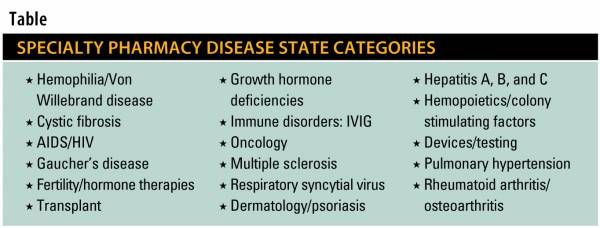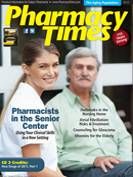How to Become a Specialty Pharmacy
Pharmacists who want to enter specialty pharmacy can mitigate the risks by educating themselves on the market.
Pharmacists who want to enter specialty pharmacy can mitigate the risks by educating themselves on the market.

With every conference we go to and every journal we read, we are increasingly bombarded with information about the specialty pharmacy industry. What does it truly mean? How can one participate? What does participation really mean? What are the true risks to my business if I do nothing? To whom do I turn for advice? Where do I start? All are good questions, but the first step is to learn about specialty.
Over the next year, we will explore through a “specialty series” what it takes to become a specialty pharmacy. This will include topics such as:
• The evolution of specialty pharmacy 101
• The specialty pharmacy patient care model: the necessary steps
• Limited distribution networks
• Data/reporting: the Holy Grail
• Doing your homework: local market research
• Facility/pharmacy requirements
• Stakeholder engagement: payers, pharma, advocacy organizations
• Accreditations
• The future of specialty pharmacy
Education and fully investing in the endeavor is crucial. Too often pharmacists attempt to enter the space without thoroughly thinking through all the dynamics. Not knowing some of those dynamics can quickly put someone out of business. Specialty products are expensive and not without risk. Learning the space, putting together a sound business plan, understanding the investment, and executing the strategy are the keys to participation.
As the blockbuster brand products fade away and become fewer, we are left with a few choices:
• Live off generic margins/revenue
• Live off front-end store sales
• Diversify the business: provide home health/nursing services, compounding services, respiratory/durable medical equipment, etc
• Embrace specialty A diversified strategy is a wise one, but specialty products are here to stay. Once we look at the facts,1 they are hard to ignore and crystal clear.
• More than 50% of late-stage pipeline drugs and more than 70% of applications for new indications are for specialty drugs
• Specialty drug spend in the medical benefit is expected to grow 60%, reaching $105 billion in 2015
• More than 50% of total pharmaceutical spend will be specialty by 2013
• As many as 50 new specialty drugs could be approved in 2011 and 2012, almost half in oncology
• 35% of new oncology drugs are oral
• 18 of the products pending/approved in 2010/11 target orphan diseases, which currently have few or no treatments
• More than 40% of new products are expected to have Risk Evaluation Mitigation Strategy requirements
So let us start with the basics and define specialty. Years ago when “biotech” products were introduced to the marketplace, no one knew what to do with them and how to categorize them. So a few payers/health care plans carved out these novel products into a new “special” class. There were a few other choice words that were also utilized, but “specialty” was the winner.
At that time, “specialty products” were defined as “biotech-like” products that were expensive (more than $500 a month per patient), had unique reimbursements (could be a pharmacy or medical benefit), had unique storage and shipping requirements (eg, refrigeration, frozen, hazardous), or required ancillary supplies (eg, administration kits, needles, syringes, alcohol swabs, sharps containers) or educational materials (administration information, support programs, etc). Today that definition has expanded and changed with the times.
Most products are considered “expensive” if they cost more than $1000 a month per patient. The category now also includes oral products (eg, oncology, transplant, HIV/AIDS products), autologous vaccines, inhalation products, intrathecal products, and supportive/adjuvant therapies in a particular drug/disease category. It also includes products that may require home health or nursing services, emergency 24/7/365 support, or orphan products (products with a small patient population).
Common disease categories include but are not limited to those listed in the Table. If you are currently dispensing products in these categories, you may be ahead of the curve in gaining access and participating in the specialty pharmacy space. However, dispensing a few products today does not guarantee you will be able to continue to do so in the future.

Stakeholders have very high expectations of pharmacies providing services to specialty patients. Physicians, pharma, payers/health care plans, and patients all have expectations based upon best-in-class offerings and services by existing specialty pharmacy providers. The longer one waits to enter the space, the greater the barriers for participation will be. It is time to decide if you want to engage. If you do, through this series I will help walk you through the process to avoid common mistakes, maximize your investments, and participate in the future of pharmacy—specialty pharmacy. PT
David M. Suchanek, RPh, is senior vice president of biotech and specialty services at D2 Pharma Consulting, LLC, a consulting firm which focuses exclusively on pharma services in the life sciences industry. Mr. Suchanek is a member of the Specialty Pharmacy Times editorial board.
References
1. Adaptation from CVS/Caremark 2011 Trend Report, D2 analysis.

